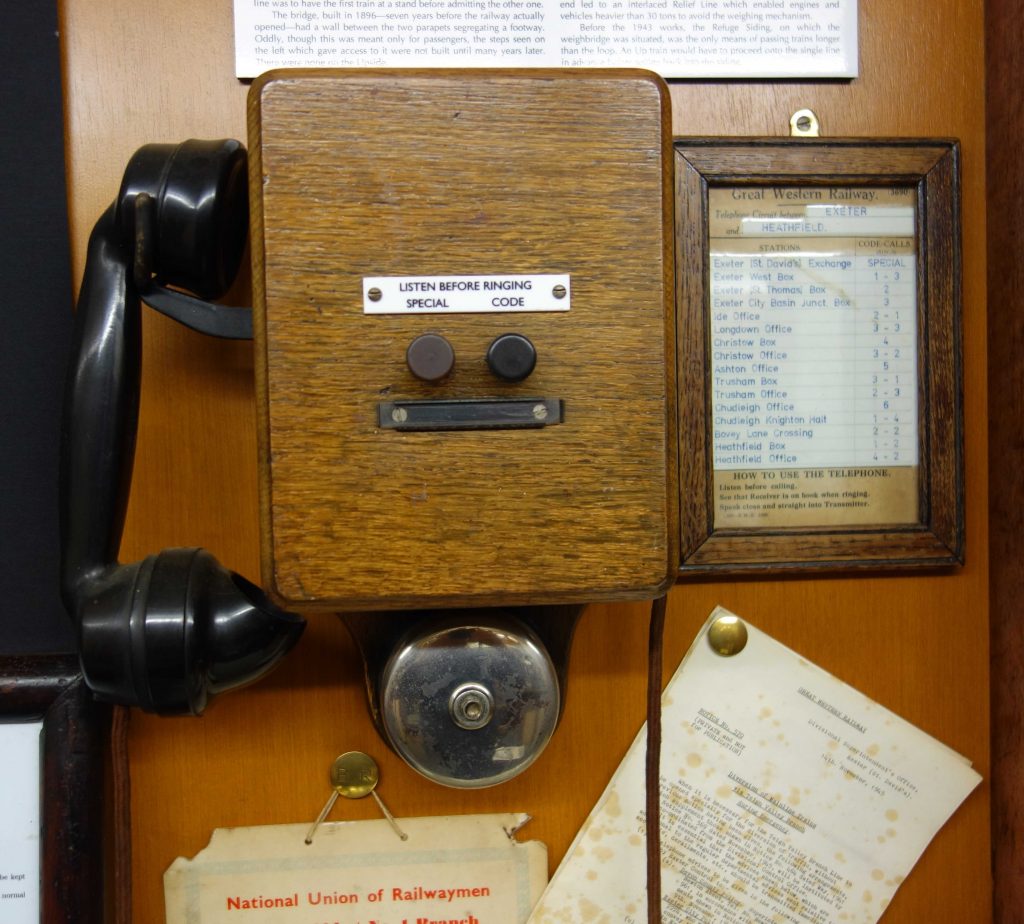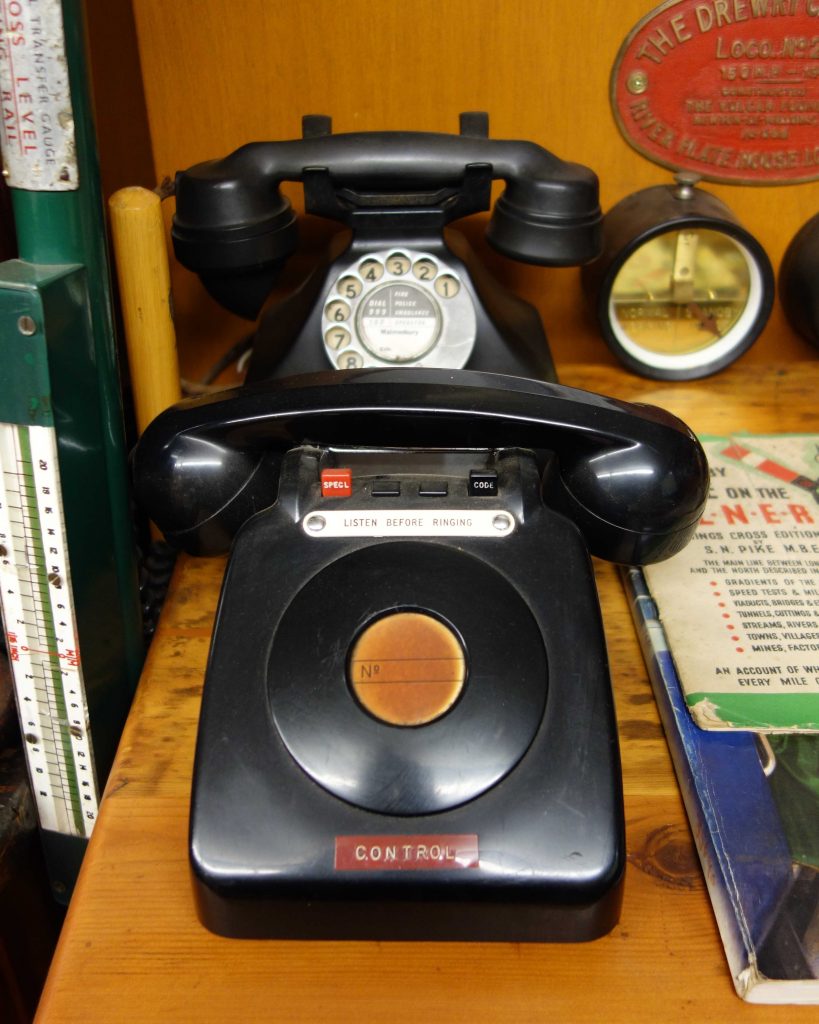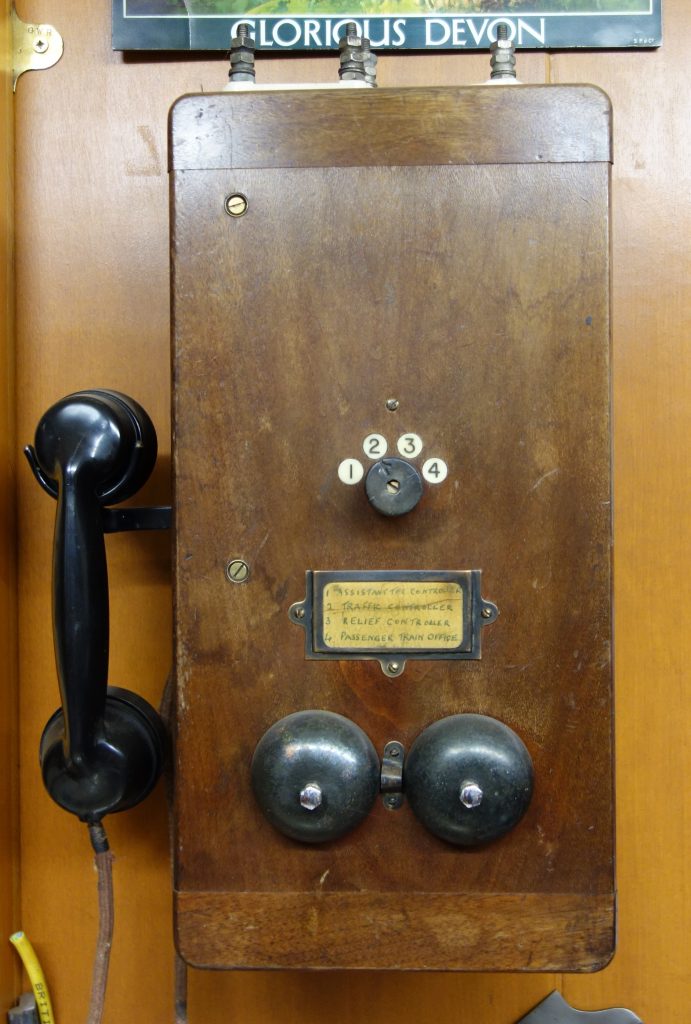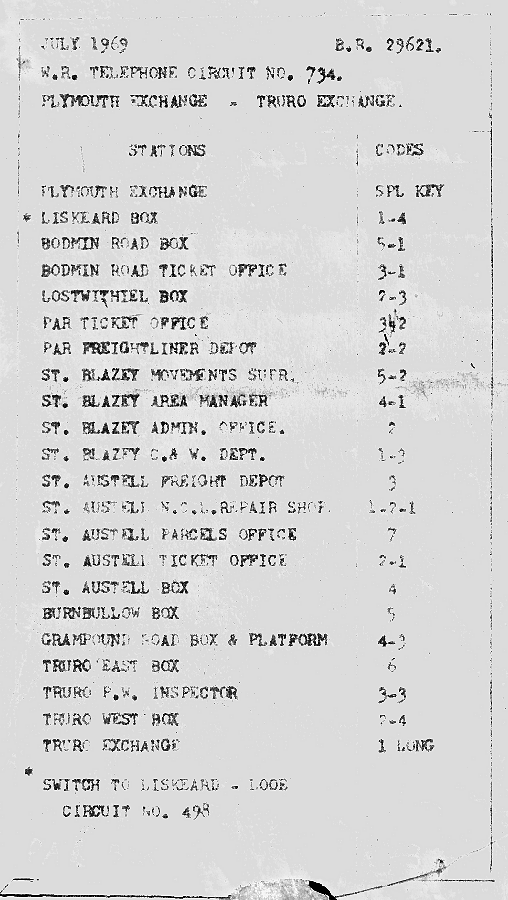Amongst the bits in the archive at Christow, the curator found this. It would have been displayed in a standard G.W.R. frame beside one of the phones on the named omnibus circuit.
On these simple circuits, all the phones were connected and all the bells rang, so it was up to the station to listen for the code, which in practice was done quite instinctively. Others would pick up just to hear what was going on, often joining in and doing what today would be called “teleconferencing.”
The instruction was “Listen before Ringing,” because if the ringer were pressed while someone was talking, he would be interrupted by a screech. The old boys used to bellow into the receiver: “Anyone on?!”
The sets could be the familiar wooden-cased type seen on the walls of signal boxes, made by Ericsson, or more modern plastic desktop models with buttons instead of a dial. Long distance sets had relays so that the battery at one end triggered the bell at the other. In the simple box-to-box variety, the battery at one end powered the bell at the other.
It was a phone like this that the signalman in Night Mail used, when he spoke close into the transmitter: “That you, Harry? You’ll have to shunt the local – I’ve got the postal on.”
When the scout worked on the St. David’s exchange, the insulation was so bad on the circuit to Barnstaple that when it rained and the line was crackling the best that could be done was getting Eggesford to pass on a message, which may have resulted in a woman who’d lost her shopping bag having a seat reserved.
As had been done from the beginning on the telegraph or block, the 11.0 a.m. time signal was sent to all points using a piece of wood to give 8-5-5 on a row of bus circuit buttons.
By the curator’s reckoning, only six out of 22 locations on this Cornish circuit remain.


The “automatic” has a standard connector and can still be used, although it would be no good having them all around the house because it has a “ringer equivalence” of one and B.T. only allows four on a line; modern phones are far less demanding.
The old phones sound hollow now. The scout remembers the technician unscrewing the earpiece and gently sliding in a new steel diaphragm when the old one had lost its springiness

It was one like this that the yard foreman at Gwinear Road used in the B.T.F. production, “Train Time,” to call control.”Gwinear here. Helston stour (STOUR: Telegraphic Code: “Following is the state of our yard at … “) … +
Engineering notices would sometimes include: “Telephone to be provided at (mileage).” A box with phone and batteries would be left and the lineman would shin up the pole and attach two wires to the bus circuit line.
So teleconferencing and mobile phones are nothing new.

